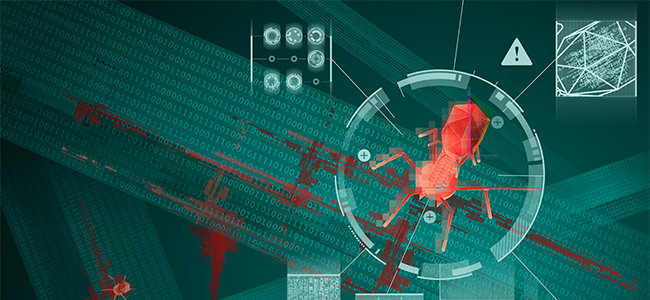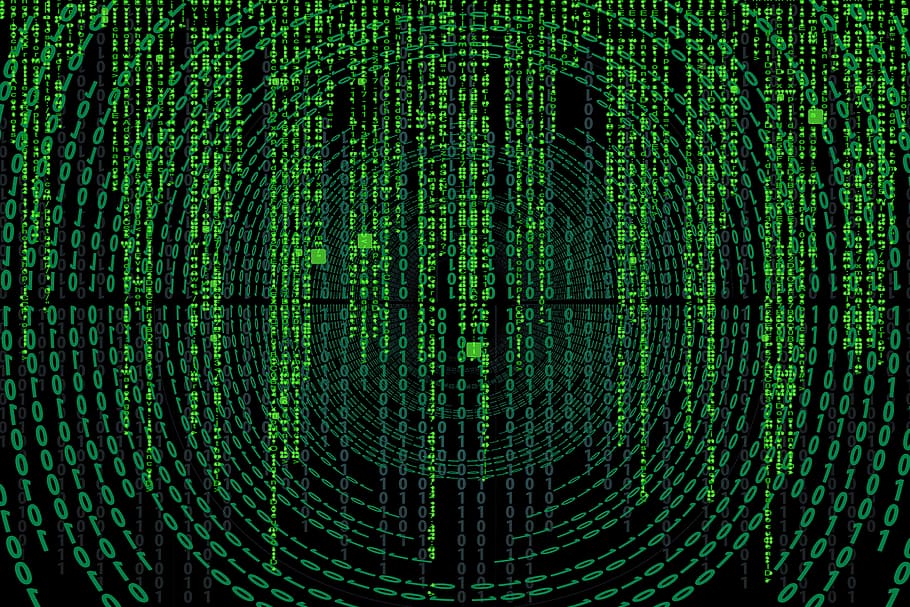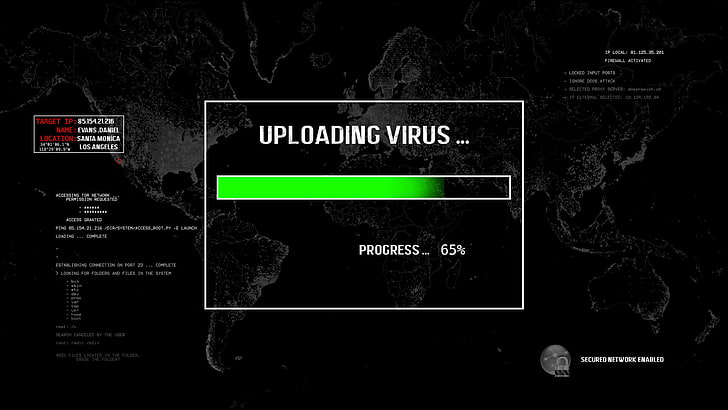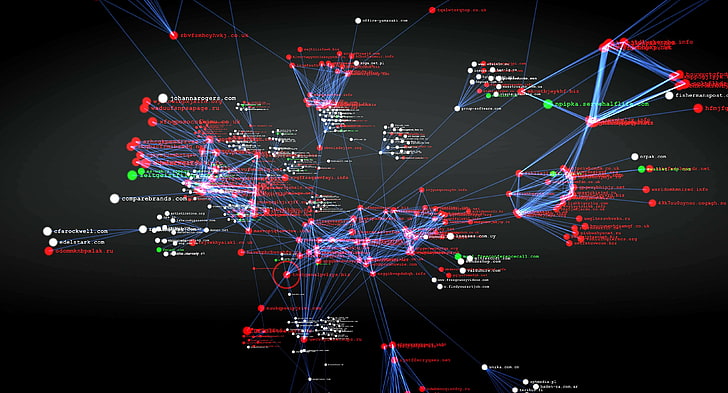Top 10 Different Types of Computer Viruses can hack your computer
10. Web Scripting Virus
Examples: DDoS, JS.fornight
Can affect: Any web page by injecting a hidden code in the header, footer, or root access file
A web prearranging infection breaks internet browser security, permitting aggressors to infuse customer side prearranging into the page. It proliferates very quickly than other ordinary infections.
At the point when it penetrates the internet browser security, it infuses malignant code to change a few settings and assume control over the program. Ordinarily, it spreads with the assistance of contaminated advertisements that spring up on-site pages.
Web prearranging infections for the most part target person-to-person communication destinations. Some are sufficiently amazing to send spam messages, and start hazardous assaults, for example, DDoS assaults to make the worker inert or incredibly lethargic.
Protection: Use malicious software removal tools in Windows, disable scripts, use cookie security or install real-time protection software for the web browser.
9. Polymorphic Virus
Examples: Whale, Simile, SMEG engine, UPolyX
Can affect: Any file
Polymorphic infections encode themselves utilizing distinctive encryption keys each time they taint a program or make a duplicate of themselves. In light of various encryption keys, it turns out to be undeniably challenging for antivirus programming to discover them.
This sort of infection relies upon transformation motors to change its unscrambling schedules each time it contaminates a gadget. It utilizes complex transformation motors that produce billions of decoding schedules, which makes it much harder to recognize.
All in all, it is a self-scrambled infection that is intended to stay away from location by scanners.
The initially known polymorphic infection (named "1260") was made by Imprint Washburn in 1990. It taints .com documents in the current or Way catalogues upon execution.
Protection: Install advanced antivirus tools that are equipped with newer security technologies (such as machine learning algorithms and behaviour-based analytics) to detect threats
8. Memory Resident Virus
Examples: Randex, Meve, CMJ
Can affect: Currently running files on PC as well as files that are being copied or renamed
Memory occupant infection lives in essential memory (Slam) and gets actuated when you switch on the PC. It influences all records at present running in the work area.
Since the infection stacks its replication module into the fundamental memory, it can contaminate records without being executed. It naturally gets actuated at whatever point the working framework stacks or performs explicit capacities.
There are two kinds of memory-occupant infections:
Quick infectors are explicitly worked to ruin whatever number records it can as fast as could be expected under the circumstances. They are extremely simple to see due to their unfavourable impacts.
Slow infectors steadily corrupt the exhibition of the PC. They spread all the more generally because they can go undetected for any longer.
Protection: Strong antivirus tools can remove the virus from the memory. They may come in the form of an OS patch or updates to existing antivirus software.
7. Macro Virus
Examples: Bablas, Concept, and Melissa virus
Can affect: .mdb, .PPS, .Doc, .XLs files
These viruses are written in the same macro language used for popular software programs such as Microsoft Excel and Word. They insert malicious code in the macros that are associated with spreadsheets, documents, and other data files, causing the infected program to run as soon as the document is opened.
Macro viruses are designed to corrupt data, insert words or pictures, move text, send files, format hard drives, or deliver even more destructive kinds of malware. They are transmitted through phishing emails. And they mostly target MS Excel, Word, and PowerPoint files.
Since this type of virus centres on applications (not on operating systems), it can infect any computer running any operating system, even those running Linux and macOS.
Protection: Disable macros and do not open emails from unknown sources. You can also install modern antivirus software that can detect easily detect macro viruses.
6. Companion Virus
Examples: Stator, Terrax.1096
Can affect: All .exe files
Friend infections were more well known during the MS-DOS period. Not at all like customary infections, they don't adjust the current record. All things being equal, they make a duplicate of a record with an alternate expansion, (for example, .com), which runs in corresponding with the real program.
For instance, in case there is a document named abc.exe, this infection will make one more secret record named abc.com. Furthermore, when the framework calls a record 'back, the .com (higher need expansion) runs before the .exe augmentation. It can perform malignant advances, for example, erasing the first documents.
Much of the time, friend infections require human intercession to additionally contaminate a machine. After the appearance of Windows XP, which doesn't utilize the MS-DOS interface much any longer, there were fewer ways for such infections to engender themselves.
Be that as it may, the infection actually chips away at ongoing renditions of Windows working frameworks if a client opens a document accidentally, particularly when the 'show record expansion' choice is deactivated.
Protection: The virus can be easily detected because of the presence of additional .com file. Install reliable antivirus software and avoid downloading attachments of unsolicited emails
5. Multipartite Virus
Examples: Ghostball, Invader
Can affect: Files and boot sector
The Multipartite infection contaminates and spreads in different manners relying upon the working framework. It ordinarily remains in memory and taints the hard circle.
Dissimilar to other infections that either influence boot area or program records, the multipartite infection assaults both the boot area and executable documents at the same time, causing more harm.
When it gets into the framework, it contaminates all drives by adjusting applications' substance. You will before long beginning seeing execution slack and low virtual memory accessible for client applications.
The previously revealed multipartite infection was "Ghostball." It was distinguished in 1989 when the Web was as yet in its beginning stage. Around then it couldn't arrive at numerous clients. Be that as it may, things have changed a great deal from that point forward. With more than 4.66 billion dynamic web clients around the world, multipartite infections represent a genuine danger to organizations and buyers.
Protection: Clean the boot sector and entire disk before storing any new data. Do not open attachments from a non-trusted internet source and install a legitimate and trusted antivirus tool.
4. FAT Virus
Example: The link virus
Can affect: Any file
FAT represents a record portion table which is a segment of a capacity circle that is utilized to store data, like the area, all things considered, absolute stockpiling limit, accessible space, utilized space, and so forth
A FAT infection modifies the list and makes it inconceivable for the PC to dispense the document. It is sufficiently amazing to constrain you to arrange the entire circle.
At the end of the day, the infection doesn't alter have documents. All things being equal, it powers the working framework to execute malevolent code modifying specific fields in the FAT document framework. This keeps your PC from getting to explicit areas on the hard drive where significant documents are found.
A few documents or even whole indexes can be overwritten and forever lost as the infection spreads its disease.
Protection: Avoid downloading files from non-trusted sources, especially those identified as “attack/unsafe sites” by browser or search engine. Use robust antivirus software.
3. Trojan Horse
Examples: Privat, ZeroAccess, Beast, Netbus, Zeus
Trojan Horse (or Trojan) is a non-duplicating sort of malware that looks genuine. Clients are commonly fooled into stacking and executing it on their framework. It can annihilate/alter every one of the documents, change the vault, or crash the PC. Indeed, it can give programmers remote admittance to your PC.
For the most part, trojans are normally spread through various types of social design. For instance, clients are fooled into tapping on counterfeit promotions or opening email connections camouflaged to seem genuine
Protection: Avoid opening unknown files (especially those with extension like .exe, .bat, and .vbs) attacked to email. Use reliable high-end antivirus software and update it regularly
2. Worm
Example: Code red, ILOVEYOU, Morris, Nimda, Sober, WANK
A worm is an independent malware program that repeats itself to spread to different PCs. It depends on networks (generally messages) and security openings to go starting with one framework then onto the next. Not at all like infections, it over-burdens the organization by duplicating or sending an excess of information (abusing data transfer capacity), compelling the hosts to close down the worker.
A worm is equipped for duplicating itself with no human communication. It doesn't have to join an application to cause harm.
Most worms are intended to adjust the content, erase documents, drain framework assets, or infuse extra noxious code onto a PC. They can likewise take information and introduce a secondary passage, making it simple for assailants to oversee a machine and its framework settings.
Protection: Keep your operating system updated and make sure you are using a strong security software solution.
1. Logic Bombs
Logic bombs are not an infection but rather intrinsically malevolent like worms and infections. It is a piece of code purposefully embedded (stowed away) into a product program. The code is executed when certain rules are met.
For instance, a wafer can embed a Keylogger code inside any internet browser expansion. The code gets actuated each time you visit a login page. It then, at that point catches every one of your keystrokes to take your username and secret word.
Logic bombs can be embedded into existing programming or into different types of malware like worms, infections, or deceptions. They then, at that point lie torpid until the trigger happens, and can go undetected for quite a long time.
Protection: Periodically scan all files, including compressed ones, and keep your antivirus software updated.






















0 Comments